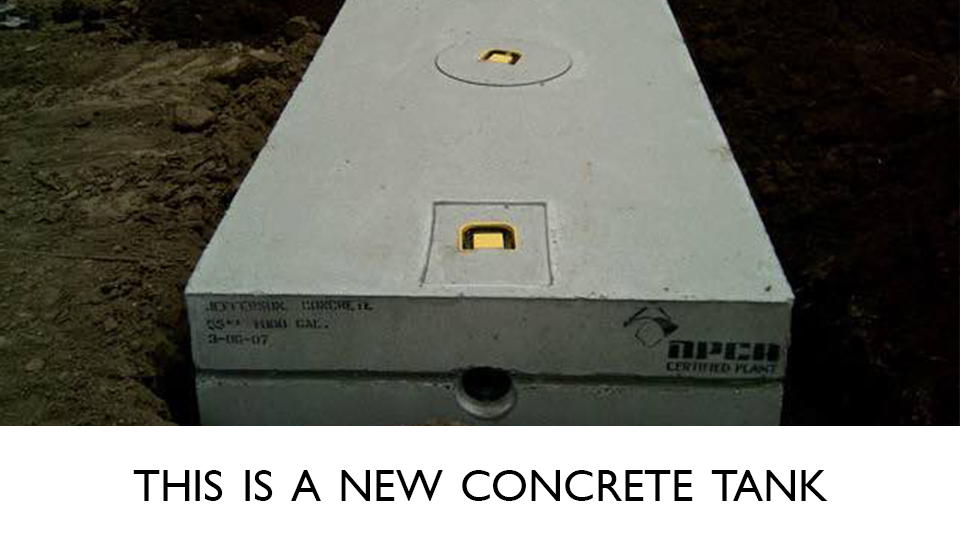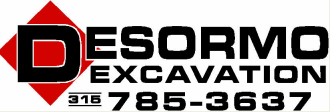Taking Care of your Septic Tank
Since the septic tank is such an essential part of a septic system, here are some points to remember about the “care” of that part of the sewage treatment system
A “starter” is not needed for bacterial action to begin in a septic tank. Many bacteria are present in the materials deposited into the tank and will thrive under the growth conditions present.
If you feel that an additive is needed, be aware that some may do great harm. Additives that advertise to “eliminate” tank cleaning may cause the sludge layer to fluff up and be washed out into the drain field, plugging soil pores. Some additives, particularly degreasers, may contain carcinogens (cancer-causing) or suspected carcinogens that will flow into the ground water along with the water from the soil treatment unit
Send all sewage into the septic tank. Don’t run laundry waste directly into the drain field, since soap or detergent scum will plug the soil pores, causing failure. Normal amounts of household detergents, bleaches, drain cleaners, and other household chemicals can be used and won’t stop the bacterial action in the septic tank. But don’t use excessive amounts of any household chemicals. Do not dump cleaning water for latex paint brushes and cans into the house sewer.
Don’t deposit coffee grounds, cooking fats, wet-strength towels, disposable diapers, facial tissues, cigarette butts and other non- decomposable materials into the house sewer. These materials won’t decompose and will fill the septic tank and plug the system. To use a 5-gallon toilet flush to get rid of a cigarette butt is also very wasteful of water. Keep an ashtray in the bathroom, if necessary.
Avoid dumping grease down the drain. It may plug sewer pipes or build up in the septic tank, plugging the inlet. Keep a separate container for waste grease and throw it out with the garbage.
If you must use a garbage disposal, you will likely need to remove septic tank solids every year or more often. Ground garbage will likely find its way out of the septic tank and plug up the drain field. It is better to compost, incinerate, or deposit the materials in the garbage that will be hauled away. As one ad says “You can pay me now, or pay me later.”
Use a good quality toilet tissue that breaks up easily when wet. One way to find out is to put a hand full of toilet tissue in a fruit jar half full of water. Shake the jar and if the tissue breaks up easily, the product is suitable for the septic tank. High wet-strength tissues are not suitable. As long as the tissue breaks up easily, color has no effect on the septic tank. Many scented toilet tissues have high wet strength.
Recharge wastes from a properly operating water softener will not harm septic tank action, but the additional water must be treated and disposed of by the drain field. If the softener recharge overloads the sewage system, this waste water can be discharged to the ground surface since it contains no pathogens. However, it must be discharged in a location where it will not be a nuisance or damage valuable grass or plants.
Using too much soap or detergent can cause problems with the septic system. It is difficult to estimate how dirty a load of laundry is, and most people use far more cleaning powder than is needed. If there are lots of suds in your laundry tub when the washer discharges, cut back on the amount of detergent for the next similar load. It’s generally best not to use inexpensive detergents which may contain excessive amounts of filler or carrier. Some of these fillers are mortmorillonite clay, which is used to seal soils! The best solution may be to use a liquid laundry detergent, since they are less likely to
have carriers or fillers that may harm the septic system.
To properly clean a septic tank, the manhole cover or the tank cover must be removed. This is the only way to be sure that all solids have been pumped out. A septic tank cannot be cleaned adequately by pumping out liquids through a 4-inch inspection pipe. Doing so often results in some of the scum layer plugging the outlet baffle when the tank refills with sewage. Be sure that the tank is opened when it is cleaned. At this time the baffles should be inspected and replaced if necessary. Here is a word of caution: Never go down into a septic tank. The gases present may poison or asphyxiate you. Only trained professionals should enter a septic tank or other confined space.




